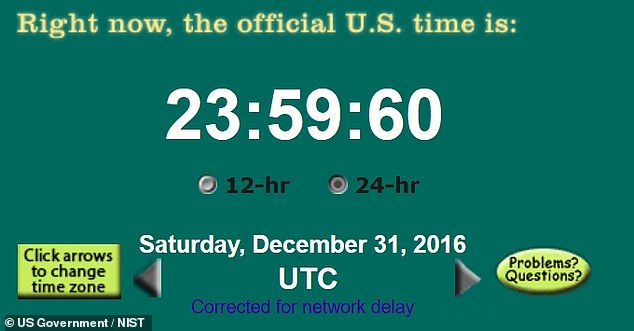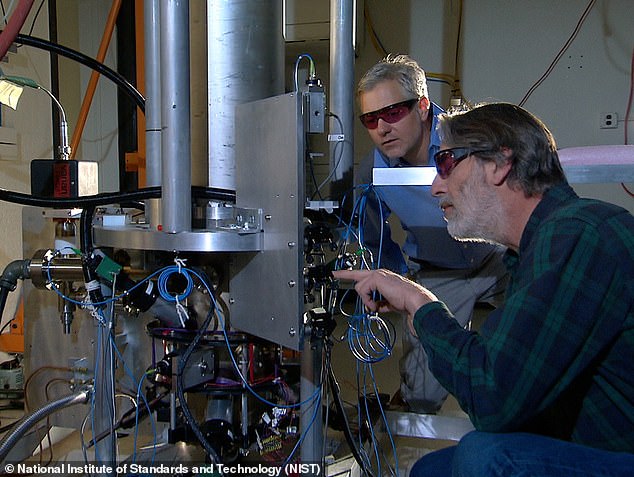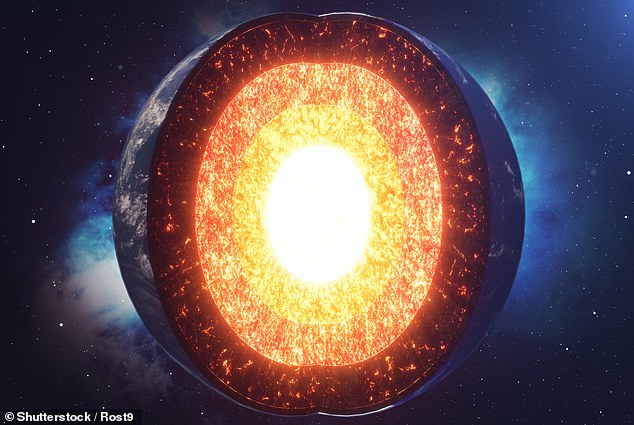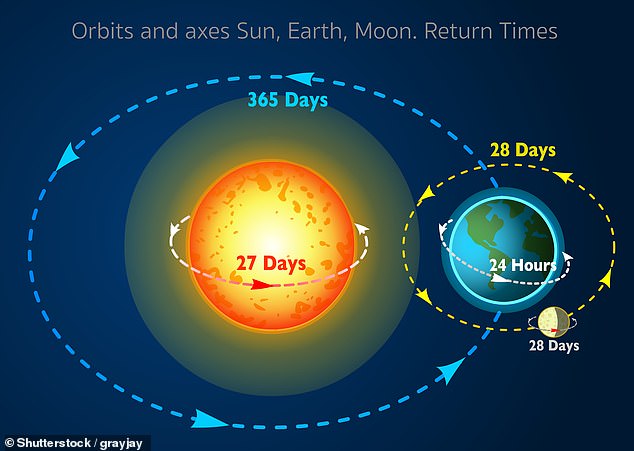Why time will stop in 2029: Scientists say a ‘negative leap second’ will be needed to adjust to the acceleration of Earth’s rotation
We all know that once every four years an extra day is added in February – also known as a leap year.
But every few years there is also a ‘leap second’, usually at the end of June or the end of December.
That’s because the speed at which the Earth rotates on its axis fluctuates slightly – meaning one complete revolution is not always exactly one day.
Now, for the first time, a scientist in the US is calling for a ‘negative’ leap second – the removal of a second.
Professor Duncan Agnew, a geophysicist at UC San Diego, says the negative leap second should happen in 2029 due to the Earth spinning too fast, but he warns it could lead to “unprecedented” problems for smartphones and computers.
To compensate for irregularities in the Earth’s rotation, leap seconds are traditionally added – but for the first time, a second could be removed, possibly in 2029

A leap second was last added on December 31, 2016. Here is a screenshot of the time.gov website where the leap second was added. You can see how this would cause confusion for computers. Professor Duncan Agnew of UC San Diego proposes removing a second by 2029 – so that the last timekeeping of the year would be 23:59:58
“Extrapolating the trends for the core and other relevant phenomena to predict future Earth orientation shows that UTC as currently defined will require a negative discontinuity by 2029,” says Professor Agnew in his new paper.
“This will pose an unprecedented problem for computer network timing and may require changes to UTC to be implemented earlier than planned.”
Coordinated Universal Time (UTC) is defined by advanced, ultra-precise ‘atomic clocks’ around the world, ticking accurately and continuously.
However, these atomic clocks do not correspond exactly with observed “solar time,” which historically defines days as a single rotation of the Earth.
The time required for a single planetary rotation occasionally changes due to the moon’s gravitational pull, causing the two time systems to drift apart.
A leap second has been added since 1972 27 times, the last of which was in 2016.
However, the Earth’s rotation has reportedly accelerated, not slowed down, since 2020.
It may therefore be necessary to remove, rather than add, a leap second in the future to keep observed solar time in sync with the clocks.

Coordinated Universal Time (UTC) is defined by advanced, ultra-precise ‘atomic clocks’ around the world, ticking accurately and continuously. Experts pictured here with the NIST-F2 atomic clock in the US
A ‘positive’ leap second is the addition of a second when the Earth’s rotation has been too slow, while a ‘negative’ leap second is the removal of a second when the Earth’s rotation has been too fast.
“Even a few years ago, the expectation was that leap seconds would always be positive, and would become increasingly common,” Professor Agnew said.
“But if you look at changes in Earth’s rotation, which is the reason for leap seconds, and break down what’s causing these changes, it looks like a negative change is very likely.”
Anyone who has forgotten to set their clock forward or back an hour knows how confusing it is to be out of sync with everyone else’s time.
The problem is that the same confusion can occur with leap seconds, especially for today’s modern technological systems.
If a computer network doesn’t know about it, it will be out of sync with everything else.
For example, if an online store’s computer and your bank’s computer maintain different times, clicking the “order” button will appear to create two actions at different times, not just one.
“One second doesn’t sound like much, but in today’s interconnected world, getting the time wrong can lead to huge problems,” says Professor Agnew.
“Many systems now have software that can accept an extra second, but few allow for the removal of a second, so a negative leap second is expected to cause many problems.”
Several factors cause Earth’s rotation speed to vary from year to year, and one of them is Earth’s liquid core: a mass of molten iron in the solid part of the planet.

Several factors cause Earth’s rotation speed to vary from year to year, and one of them is Earth’s liquid core – a mass of molten iron in the solid part of the planet (stock image)
Very slow movements of different parts of the core interact to produce the Earth’s magnetic field.
These changing movements also cause the Earth to spin faster or slower.
In his new research, Professor Agnew claims that the melting of ice at high latitudes due to global warming is an additional factor slowing the Earth’s rotation.
When the ice melts, the water spreads over the entire ocean, increasing the Earth’s “resistance” to angular acceleration and in turn slowing down the planet.
So while Earth’s rotation has accelerated overall, global warming is slowing it down, delaying the need for a negative leap second.
Without the slowing of Earth’s rotation due to melting ice, the negative leap second would be needed three years earlier, in 2026, reports Professor Agnew.

Each day on Earth lasts 86,400 seconds, but the rotation is not uniform, meaning that each day over the course of a year has a fraction of a second more or less
While this delay gives more time to prepare, it is a trivial benefit compared to the enormous problems caused by global warming, he added.
“Increased ice melt in Greenland and Antarctica, as measured by satellite gravity, has reduced Earth’s angular velocity faster than before,” he says in his study, published in the journal Nature.
‘Global warming and global timekeeping are inextricably linked and this may become even more so in the future.’
In 2022, scientists voted to abolish the leap second system entirely, but this may not happen until 2035 – by which point a negative leap second might already have been necessary.
